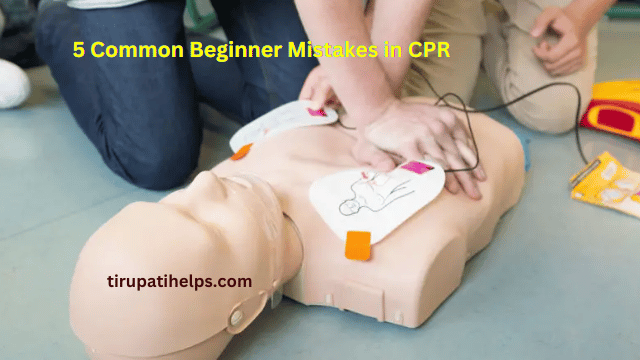Many people get cardiac arrest outside of a hospital and don’t survive. However, when you know how to do CPR, those odds change.
So what are the common beginner mistakes in CPR that decrease the impact of your save? The more you know, the better your chances of making it through the self-learning process!
We encourage you to keep reading to learn more about the basics of CPR and the top mistakes to avoid.
-
Failing to Check for Danger
One of the most crucial aspects of how to perform CPR is ensuring the safety of both the victim and the rescuer. Beginners often neglect to assess the scene for potential dangers. It can put them and the victim at risk.
Before initiating CPR, ensure the area is safe from traffic, fire, or collapsing structures. Double-check if it is not safe to approach. Ensure that you also call for professional help immediately.
-
Inadequate Chest Compressions
Performing proper CPR compression rate is important. Many beginners make the mistake of not pushing hard enough. Some don’t allow the chest to recoil between compressions fully.
Apply firm pressure, compressing the chest at least two inches deep for adult victims. On the other hand, it should be one-third the depth for infants.
Allow the chest to recoil before starting the next compression. Remember to maintain a steady rhythm of compressions. Keep it up until professional help arrives.
-
Neglecting Rescue Breaths
Rescue breaths are an essential component of CPR. Yet beginners often focus only on chest compressions.
Neglecting to deliver rescue breaths can deprive the victim’s brain of oxygen. During a CPR training class, you will learn that after performing 30 chest compressions, you must tilt the victim’s head back. Lift the chin, and create an airtight seal over the mouth.
Deliver two slow breaths into the victim’s mouth. Watch out for visible chest rise.
Consider using a CPR mask if you are uncomfortable giving mouth-to-mouth rescue breaths. You can also use a face shield to protect yourself while still delivering adequate ventilation.
-
Incorrect Hand Placement
To avoid this mistake, remember to use proper CPR hand placement. Position your hands correctly in the center of the victim’s chest and interlock your fingers.
Placing the hands too high or too low on the victim’s chest can reduce the effectiveness of compressions.
For adult victims, position the heel of one hand on the lower half of the breastbone. It should be just above the xiphoid process.
Place the other hand on top, interlocking the fingers. For infants, use two fingers to compress the chest just below the nipple line.
-
Failing to Call for Professional Help
It is also important to call professional medical help as soon as possible. Many beginners need to remember to call emergency services before starting CPR.
Always remember to call for help immediately. Provide a concise description of the situation and your location.
To learn more about CPR and receive group discounts for certification courses, visit websites like https://cprcertificationnow.com/pages/group-discounts.
Avoiding Beginner Mistakes in CPR
Mastering CPR is a skill that can save lives. However, it is also important to avoid common beginner mistakes.
Remember these five common beginner mistakes in CPR and follow the recommended guidelines. They can help improve your effectiveness as a responder. Remember, taking a CPR course and refreshing your knowledge gives you the confidence and skills to respond to life-threatening situations.
Was this article helpful? Check our blog for more content.

Leave A Comment